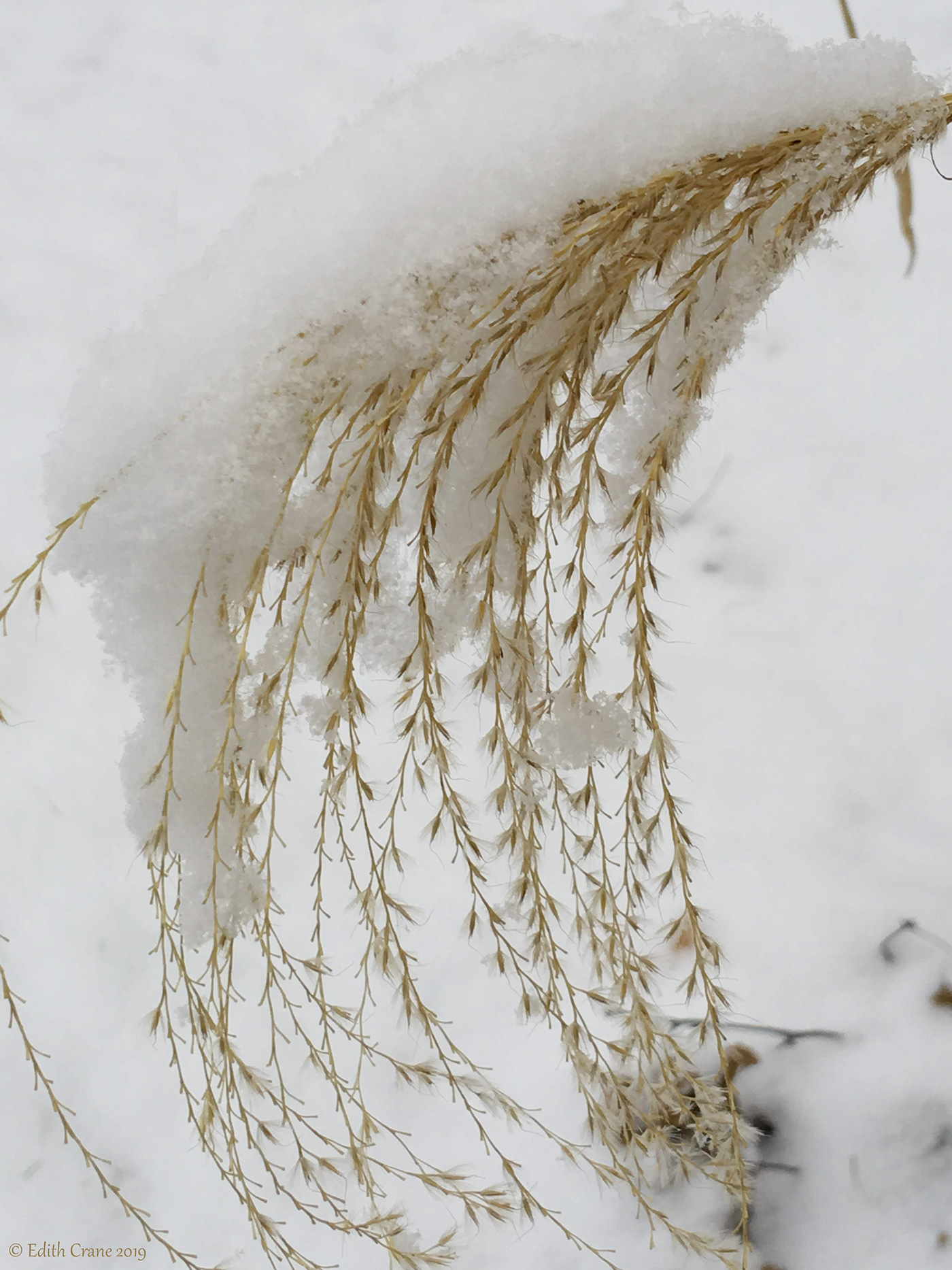Understanding A Developing Wintry Mix Of Precipitation

Table of Contents
Understanding the Components of a Wintry Mix
A wintry mix isn't just one type of precipitation; it's a complex combination of several, making it difficult to predict and even more challenging to navigate. Let's examine the individual components that contribute to this hazardous weather event:
Freezing Rain: A Treacherous Threat
Freezing rain forms when rain falls through a layer of sub-freezing air near the ground. Upon contact with surfaces below 0°C (32°F), the supercooled water instantly freezes, forming a coating of ice.
- Formation: Warm, moist air aloft encounters cold air near the surface, creating a temperature inversion. Rain falls through this cold layer, remaining liquid until it hits a surface cold enough to freeze.
- Hazards: Freezing rain is particularly dangerous due to its ability to coat everything in a layer of invisible ice. This leads to:
- Power outages from ice-laden power lines.
- Extremely hazardous driving conditions.
- Damage to trees and other structures.
- Identification: Freezing rain is often difficult to see initially, as it's transparent. Look for a gradual accumulation of ice on surfaces.
Sleet: Ice Pellets from Above
Sleet, also known as ice pellets, forms when rain falls through a layer of freezing air, freezing into small, rounded ice particles before reaching the ground. The presence of a deep enough sub-freezing layer is key to sleet formation.
- Formation: Rain freezes into ice pellets as it falls through a thick layer of sub-freezing air. This differs from freezing rain, where the freezing occurs on the surface, not during the fall.
- Hazards: Sleet can accumulate quickly, reducing visibility and causing damage to plants and property. Driving on roads covered in sleet is extremely hazardous.
- Distinguishing Sleet from Freezing Rain: Sleet is opaque and bounces when it hits the ground; freezing rain is transparent and forms a continuous coating of ice.
Snow: A Variable Winter Weather Element
Snow, a familiar component of winter weather, comes in many forms, each with its own characteristics and hazards.
- Types of Snow: Light, fluffy snow and heavy, wet snow have vastly different impacts. The density of snowfall depends on temperature and moisture content.
- Formation: Snow forms when water vapor in the atmosphere undergoes deposition, transforming directly into ice crystals without passing through the liquid phase. Temperature plays a crucial role; colder temperatures usually result in drier, lighter snow.
- Dangers: Heavy snowfall can lead to:
- Blizzards, characterized by intense snowfall, strong winds, and severely reduced visibility.
- Snowdrifts that block roads and create travel hazards.
- Roof collapses due to the weight of accumulated snow.
Rain: The Unlikely Winter Mix Participant
While rain isn't typically associated with a wintry mix, it can significantly impact the overall severity and danger.
- Mixing with Other Precipitation: Rain can wash away already fallen snow or sleet, creating slick conditions. It can also lower the temperature of surfaces, making them more susceptible to freezing rain.
- Impact on Severity: Rain mixing with other precipitation types often leads to more dangerous conditions than snow alone. The resulting slush can make driving extremely difficult.
- Transition: The transition from rain to other precipitation types is a critical point in a wintry mix's development, as it signifies the onset of more dangerous weather.
Predicting and Monitoring a Wintry Mix
Accurate forecasting is vital for safety during a wintry mix. This section explores the tools and techniques used to predict and monitor these complex weather events:
Role of Weather Forecasts and Models
Reliable sources are crucial for understanding the impending weather.
- Consult Reliable Sources: The National Weather Service (NWS) and other reputable meteorological agencies provide accurate forecasts and warnings.
- Understanding Weather Maps: Learn to interpret weather maps, focusing on isotherms (lines of equal temperature) and freezing levels.
- Interpreting Warnings and Advisories: Pay close attention to weather warnings and advisories, including winter storm watches, warnings, and advisories.
Using Weather Apps and Technology
Technology offers real-time updates and detailed information.
- Real-Time Updates: Utilize weather apps for up-to-the-minute information on precipitation type, intensity, and movement.
- Radar Imagery: Radar imagery allows you to visually track the movement of the wintry mix and anticipate its arrival in your area.
- Local News and Emergency Alerts: Stay informed by checking local news channels and signing up for emergency alerts.
Safety Precautions During a Wintry Mix
Knowing how to stay safe is paramount during a wintry mix.
Driving Safely in a Wintry Mix
Driving in a wintry mix demands extra caution.
- Reduced Speed and Increased Following Distance: Drive slowly and maintain a significant following distance to allow for increased braking time.
- Winter Tires and Emergency Kits: Equip your vehicle with winter tires and an emergency kit containing blankets, food, water, and a first-aid kit.
- Avoid Driving if Possible: If possible, avoid driving altogether during a severe wintry mix.
Protecting Yourself and Your Property
Preparing your home is as important as preparing your vehicle.
- Power Outages: Have a plan in place for potential power outages, including backup power sources and extra warm clothing.
- Protecting Pipes: Take steps to protect your pipes from freezing, such as insulating exposed pipes and allowing faucets to drip.
- Stay Informed: Stay informed about the evolving situation by monitoring weather reports and adhering to any advisories or warnings issued by local authorities.
Conclusion
Understanding a developing wintry mix of precipitation requires knowledge of its various components—freezing rain, sleet, snow, and rain—and how they interact. By monitoring weather forecasts, utilizing available technology, and taking necessary safety precautions, you can significantly reduce risks associated with this complex weather phenomenon. Remember to always check your local weather forecast for updates and warnings regarding any developing wintry mix and stay safe! Preparation and awareness are key to navigating a dangerous wintry mix. Don't be caught unprepared; understand the risks and take the necessary steps to protect yourself and your family from the hazards of a wintry mix.

Featured Posts
-
 Old North State Report May 9 2025 Top Stories And Updates
May 20, 2025
Old North State Report May 9 2025 Top Stories And Updates
May 20, 2025 -
 Giorgos Giakoumakis And The Mls Understanding His Reduced Market Value
May 20, 2025
Giorgos Giakoumakis And The Mls Understanding His Reduced Market Value
May 20, 2025 -
 Recent D Wave Quantum Inc Qbts Stock Market Activity A Detailed Look
May 20, 2025
Recent D Wave Quantum Inc Qbts Stock Market Activity A Detailed Look
May 20, 2025 -
 Voice Recognition Technology Revolutionizing Hmrc Call Service
May 20, 2025
Voice Recognition Technology Revolutionizing Hmrc Call Service
May 20, 2025 -
 Ferraris Balancing Act Hamiltons Comfort Vs Leclercs Needs
May 20, 2025
Ferraris Balancing Act Hamiltons Comfort Vs Leclercs Needs
May 20, 2025
